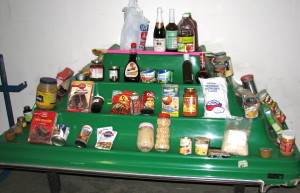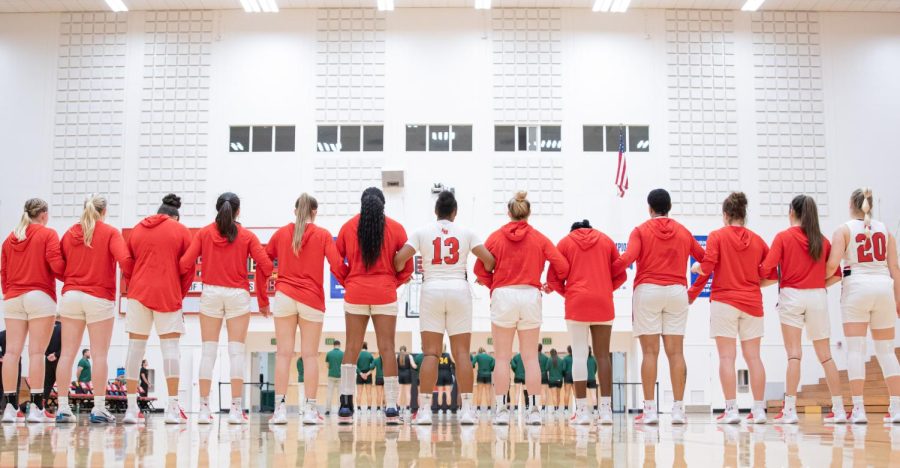 At a little after 3:00 on a recent Friday afternoon, the preponderance of the shelves at the Alameda County Community Food Bank were practically bereft of food. It would have been a distressing sight if not for the assurances of media liaison Brian Higgins.
At a little after 3:00 on a recent Friday afternoon, the preponderance of the shelves at the Alameda County Community Food Bank were practically bereft of food. It would have been a distressing sight if not for the assurances of media liaison Brian Higgins.
“It’s just about empty in here now, but we had a busy shopping day this morning,” said Higgins.
By “shopping day,” he’s referring to visits from some of the 275 food pantries, soup kitchens, senior centers, after-school programs, and shelters that patronize the food bank’s huge warehouse facility in order to provide food to individuals in Alameda County communities who would otherwise remain hungry.
Non-profit member agencies schedule appointments usually once a week to stock much needed supplies, from the donated, surplus and purchased food for distribution to those in need.
According to Higgins, nearly 60 percent of the food bank’s funding comes from individuals. The remainder comes from food drives and governmental agencies, at the federal, state and local levels, including local farmers, and the United States Department of Agriculture.
Although direct food donations are a vital factor in the effort to curb hunger, direct cash donations are preferred because of the food bank’s ability to buy in bulk. As a matter of fact, Higgins suggests that those in a giving mood visit the “virtual food drive” section of the agency’s website.
“People are always amazed at how so little can buy so much. With our bulk prices, one dollar buys $7 worth of food,” Higgins said. “They can’t even match our costs at the big box stores.”
Higgins recommends the virtual food drive for several other reasons as well.
“It is, by far, the greenest method to contribute. People do not spend time in traffic, or wear and tear on their automobiles, or gas money to shop. It saves us money that would have gone to schedulers, drivers and fuel to get the food to its destination, and it allows them to purchase the most needed and nutritional items,” he said.
The food bank is very particular about the food it distributes. A large percentage of what it sends out is made up of fresh fruits and vegetables.
“We stopped accepting or distributing carbonated beverages in 2005. Furthermore, we do not pass sugar products onto an undernourished community,” Higgins said.
A multi-tiered table stands in the vast warehouse, sporting examples for volunteers of foods unacceptable for distribution: honey-roasted nuts, maple syrup, sugar-laden “fruit punch” products, and other calorie rich but nutrient poor items. A healthy, nutritious food source is the food bank’s goal for the county’s underfed citizens.
The usage rate for the food bank’s services increased by 23 percent between 2006 and 2008, even though the Alameda County population grew only by one percent during the same period of time, according to the food bank website.
Among the busier volunteers are the people that answer the phones for the emergency food helpline. These individuals patiently deal with those in desperate need of food, many of whom have waited until there is little option but to seek help.
“So many people wait until it’s almost too late. These are people who, until recently, have always worked and provided for their families,” Higgins said.
“Often there is a misplaced embarrassment, or a stigma attached to the idea of needing help. Our phone volunteers listen, console and often counsel the callers, assuring them that help is available at food pantries or soup kitchens in their areas.”
Another problem lending itself to hunger is that government programs are under-utilized. The food bank assists people in need with filling out paperwork to apply for food stamps. Those applications submitted by the food bank are given priority in assessing the eligibility of the applicants. Many people are qualified for help, but have no idea that help is available to them.
A major reality that the food bank is trying to convince its clients of is that there is no shame in poverty.
The federal government designates “low income” as “people living at or below 200 percent of the Federal Poverty Threshold, or $36,620 for a family of three. Over 26 percent of Alameda County residents fall into this category. Even a temporary job loss, or an unplanned expense such as a medical bill, or a necessary car replacement can be financially catastrophic for families living from paycheck to paycheck.
Food bank personnel would like nothing more than to be out of work because their services are no longer needed, but until that time, denizens of this county need not go to bed hungry.
Food Bank in Need Of Cash Donations
September 23, 2010
More to Discover










